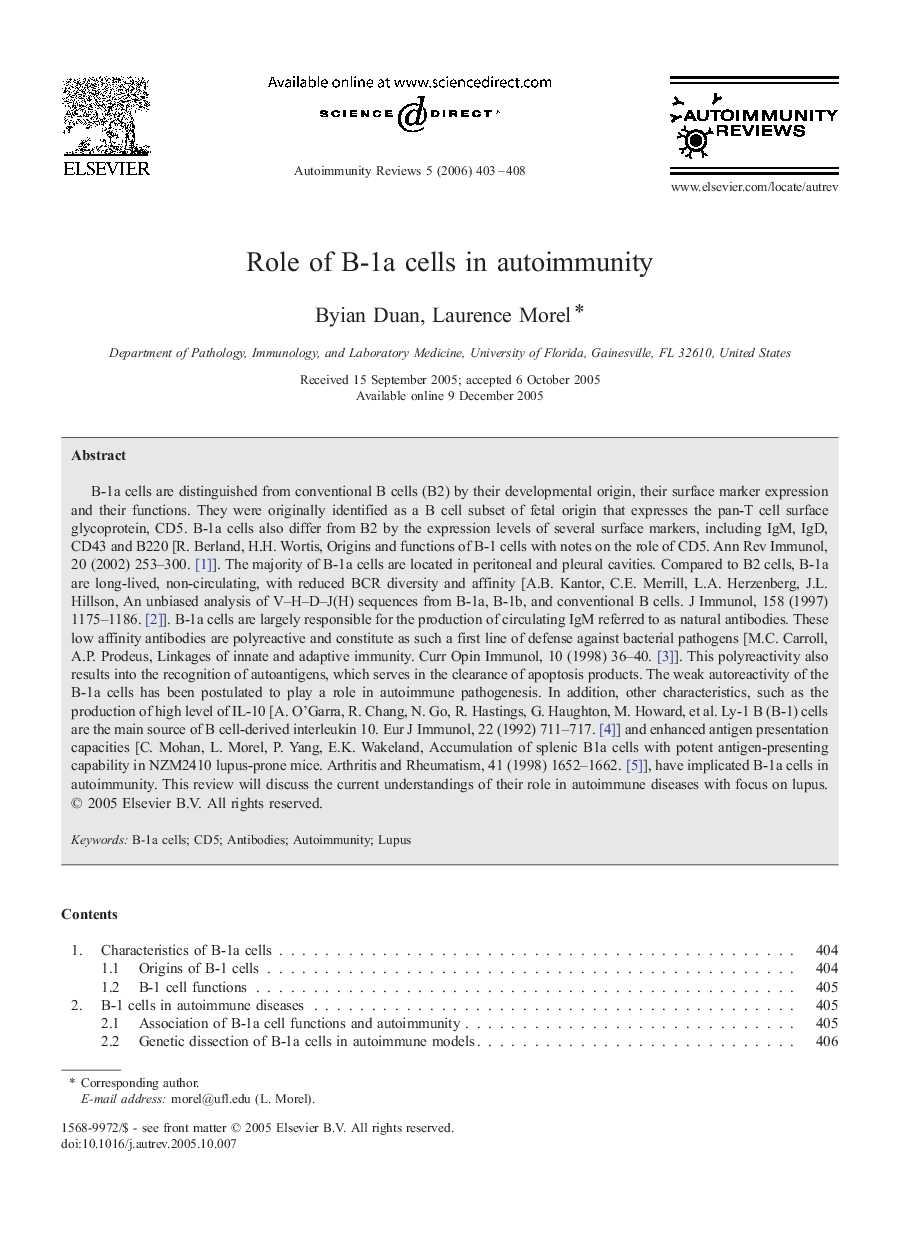| کد مقاله | کد نشریه | سال انتشار | مقاله انگلیسی | نسخه تمام متن |
|---|---|---|---|---|
| 3342682 | 1214302 | 2006 | 6 صفحه PDF | دانلود رایگان |

B-1a cells are distinguished from conventional B cells (B2) by their developmental origin, their surface marker expression and their functions. They were originally identified as a B cell subset of fetal origin that expresses the pan-T cell surface glycoprotein, CD5. B-1a cells also differ from B2 by the expression levels of several surface markers, including IgM, IgD, CD43 and B220 [R. Berland, H.H. Wortis, Origins and functions of B-1 cells with notes on the role of CD5. Ann Rev Immunol, 20 (2002) 253–300. [1]]. The majority of B-1a cells are located in peritoneal and pleural cavities. Compared to B2 cells, B-1a are long-lived, non-circulating, with reduced BCR diversity and affinity [A.B. Kantor, C.E. Merrill, L.A. Herzenberg, J.L. Hillson, An unbiased analysis of V–H–D–J(H) sequences from B-1a, B-1b, and conventional B cells. J Immunol, 158 (1997) 1175–1186. [2]]. B-1a cells are largely responsible for the production of circulating IgM referred to as natural antibodies. These low affinity antibodies are polyreactive and constitute as such a first line of defense against bacterial pathogens [M.C. Carroll, A.P. Prodeus, Linkages of innate and adaptive immunity. Curr Opin Immunol, 10 (1998) 36–40. [3]]. This polyreactivity also results into the recognition of autoantigens, which serves in the clearance of apoptosis products. The weak autoreactivity of the B-1a cells has been postulated to play a role in autoimmune pathogenesis. In addition, other characteristics, such as the production of high level of IL-10 [A. O'Garra, R. Chang, N. Go, R. Hastings, G. Haughton, M. Howard, et al. Ly-1 B (B-1) cells are the main source of B cell-derived interleukin 10. Eur J Immunol, 22 (1992) 711–717. [4]] and enhanced antigen presentation capacities [C. Mohan, L. Morel, P. Yang, E.K. Wakeland, Accumulation of splenic B1a cells with potent antigen-presenting capability in NZM2410 lupus-prone mice. Arthritis and Rheumatism, 41 (1998) 1652–1662. [5]], have implicated B-1a cells in autoimmunity. This review will discuss the current understandings of their role in autoimmune diseases with focus on lupus.
Journal: Autoimmunity Reviews - Volume 5, Issue 6, July 2006, Pages 403–408